by Emily Patterson
When a lawnmower tire has plenty of tread left yet has a puncture or leak, it may be less expensive to put an inner tube in the tire to extend the life of the tire. To purchase an inner tube for a lawnmower tire, get the numbers on the side of the tire and call local tire shops for price and availability. Check for any glass, nails or other debris and remove before inserting the inner tube in the tire.
Put a jack, jack stand, concrete block or other stable wedge under the lawnmower to support the lawnmower.
Remove the tire and rim from the lawnmower. Lay the wheel on a solid surface.
Wedge a crowbar and hammer between the rim and tire. Hit the crowbar with the hammer to push the tire away from the rim to break the bead. Go all the way around the rim with the crowbar and hammer to push the tire totally away from the rim. Be careful not to damage the edge of the tire or the rim.
Push the tire down where the valve stem is protruding through the rim. Use a pair of sharp snips to cut the valve stem and remove.
Use the crowbar as a wedge to carefully slide the tire, one small section at a time, over the rim so the rim is under the lip of the tire.
Sprinkle cornstarch into the tire. This will help the inner tube move freely in the tire and make it easier to maneuver into position.
Lay the inner tube on the top and position it so that the valve stem on the inner tube is in the same position as the hole for the valve stem on the rim. Push the inner tube into the the tire and push the valve stem through the hole in the rim. Use a pair of vise grips to clamp the valve stem on the outside of the rim.
Push the inner tube onto the rim with your hands and move it into position in the tire. Make sure that the inner tube is not twisted in the tire.
Wash the edge of the tire and inner edge of the rim with hot, soapy water. Do not saturate. It is easier to reseat the bead when both the tire and rim are clean.
Do not saturate. It is easier to reseat the bead when both the tire and rim are clean.
Lay the crowbar across the rim horizontally so that the hooked end can be inserted between the tire and the rim. Hook the end of the crowbar onto the rim under the edge of the tire that was removed from the rim. Be careful that you do not pinch the inner tube. Lift the end of the crowbar so the tire moves back into position on the inner side of the rim. Follow this procedure all the way around the rim, in small increments, until the entire tire has been moved back into position on the rim.
Remove vise grips from the valve stem and inflate the inner tube until the tire pushes against the rim. When the tire pushes against the rim, pour liquid dish soap between the edge of the tire and the rim. Wrap a heavy rope around the center of the perimeter of the tire and pull it tight. You can also use a clothing belt for this. The purpose of this is to push the edge of the tire as tight against the edge of the rim as possible with equal distribution all the way around. Pour more dish liquid all the way around the rim between the tire and the inner tube.
Pour more dish liquid all the way around the rim between the tire and the inner tube.
Continue inflating the inner tube until the tire is completely tight against the rim and there is no space between the edge of the tire and the rim. Deflate the inner tube and push on the tire where it meets the rim. If it pushes away from the rim, reinflate the inner tube. Repeat this process until the tire cannot move away from the rim when pressed.
Deflate the inner tube until it is inflated to the manufacturer's recommended pressure. Replace the rim on the lawnmower.
References
Tips
Things You'll Need
Warnings
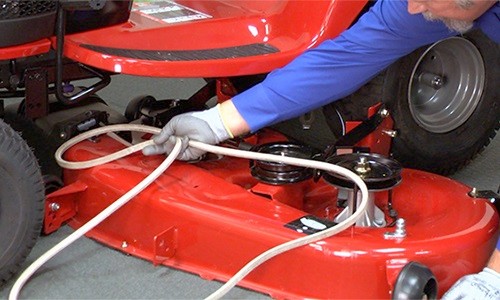 Inflate the tire only to the manufacturer's recommendation before replacing on the tire. Overinflating can cause the tire to burst.
Inflate the tire only to the manufacturer's recommendation before replacing on the tire. Overinflating can cause the tire to burst. Writer Bio
Emily Patterson has been creating content for websites since 1996. She specializes in home improvement, natural body care and natural cleaning articles. Patterson holds a computing certificate from Penn State University.
Written by Jonahin Grass-Cutting Machines and Tools
This site is reader-supported and I earn commissions if you purchase products from retailers after clicking on a link from this site. As an Amazon Associate, I’ll earn from qualifying purchases.
Most riding mowers use tubeless tires to save time and energy. However, inserting a tube might seem like a good idea because it inflates the tire and prolongs its lifespan. Some people worry that using a tube in a tubeless mower will pop the tire, but you might be surprised by the results.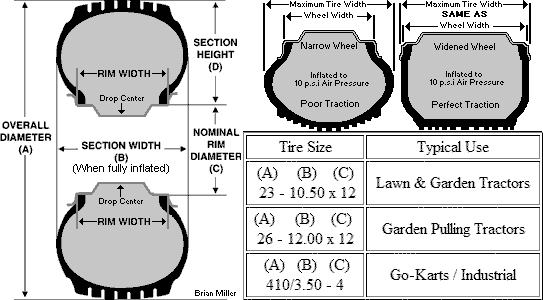
You can put a tube in a tubeless lawnmower tire by deflating and wedging the old tire, then slide the tube into the tire and inflate it. You might have to drill a hole in the rim to make room for the tube’s valve stem or seal the stem after inflating the tube.
In this article, we’ll show you the process of putting a tube into a tubeless mower tire, what you need to know beforehand, and a few reasons you might want to avoid it. Enjoy!
To put a tube in a tubeless mower tire, follow these steps:

If you don’t have one already, check out the best tire tubes to find the right size for your lawnmower. It’s important to find a tire tube with the same dimensions as your current tire. Don’t forget to ensure the valve stem is the same size, too; Otherwise, you’ll have to widen the valve stem’s hold in the rim with a drill bit.
Loose, old tires of one of the many reasons a lawnmower can be too loud. Make sure you install the previously mentioned C-clip and rubber boot when you put the wheel back onto the lawnmower.
Make sure you install the previously mentioned C-clip and rubber boot when you put the wheel back onto the lawnmower.
Watch this video by Farpoint Farms for details instructions:
https://www.youtube.com/watch?v=hR44AGpadR8Video can’t be loaded because JavaScript is disabled: Installing Inner Tubes On Your Riding Mower Tires. (https://www.youtube.com/watch?v=hR44AGpadR8)
Let’s dive into a handful of things you need to know before trying this process below.
Before putting a tube in a tubeless mower tire, you should know that you might have to drill a bigger hole for the valve stem. Your lawnmower’s tires might have a thinner valve stem than the tube you want to insert. If this happens, use a drill bit to widen the hole.
You should also keep these tips in mind:
 Exceeding the max PSI will pop the tire or make the ride much bumpier than it needs to be. It can also cause micro tears in the tread that you can’t see until they rip open.
Exceeding the max PSI will pop the tire or make the ride much bumpier than it needs to be. It can also cause micro tears in the tread that you can’t see until they rip open.Unfortunately, not all tubeless lawnmowers should use a tube to fill the tire. Find out why in the following section.
You shouldn’t put a tube in a tubeless lawnmower tire if the tire is cracked, punctured, or ripped.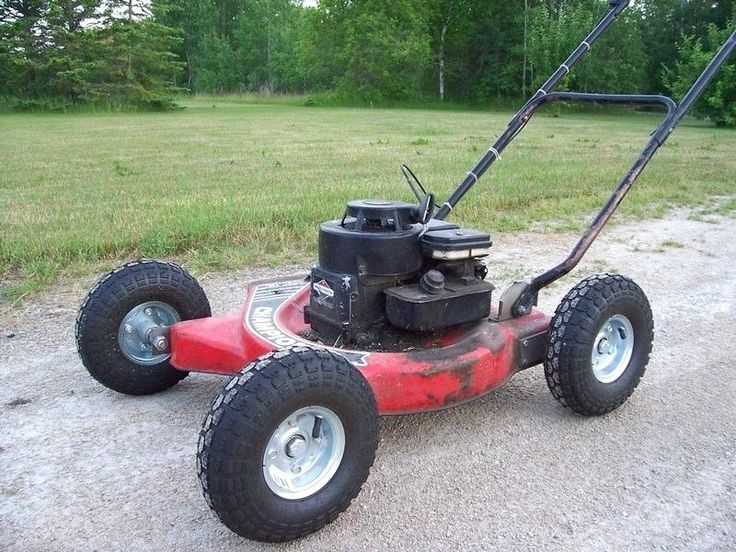 Furthermore, the rim needs to be in good condition for the tube to work properly. An incorrect tube size will over-inflate or under-inflate the tire, which could pop it.
Furthermore, the rim needs to be in good condition for the tube to work properly. An incorrect tube size will over-inflate or under-inflate the tire, which could pop it.
Here’s a list of circumstances in which you should avoid putting a tube in a tubeless lawnmower tire:
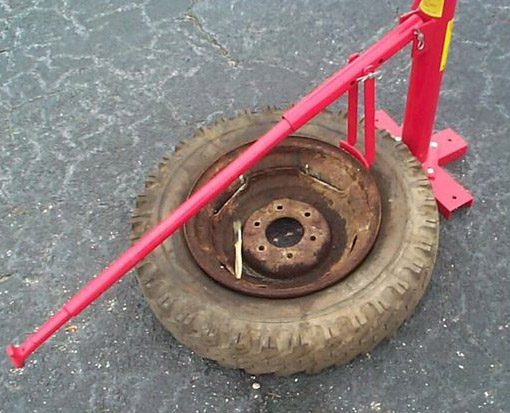
If your lawnmower doesn’t have space for a tube, don’t forget to lubricate the mower wheels. Proper lubrication prevents rust, overheating, squeaking, and other unwanted mower issues. Tubes can be inserted into most tubeless mower tires, but not all of them. Follow the aforementioned guides and videos for step-by-step instructions.
Tweet
Do You Need a Torque Wrench for a Lawn Mower Blade?
Torque wrenches are often known as the go-to tools for adjusting lawnmower blades. After all, they let you control the amount of pressure you apply without damaging the nut or blades. However, what...
However, what...
Continue Reading
link to Can You Use Boiling Water to Kill Crabgrass?Can You Use Boiling Water to Kill Crabgrass?
Boiling water is useful when it comes to getting rid of most weeds. The high temperature scorches the plant, much like a warm summer day. It also prevents the weeds from spreading seeds and growing....
Continue Reading
When purchasing a cultivator for a household or farm, they often look solely at the performance of the unit and engine power. But the running gear of the equipment has a direct impact on the efficiency of work. Each owner must clarify in advance which wheels fit of his model walk-behind tractor .
Factory walk-behind tractors are fully equipped, however, the undercarriage fails over time due to loads. It is important to have at least two pairs of spares in the bins at home wheels on the cultivator cart in order to replace the defective part in time.
In addition to replacing worn out wheels, modernization of the running gear is often required. This must be done in the following cases:
In our store you can choose and buy top wheels for motoblock Neva and other manufacturers.
Before you decide which wheels are best for your walk-behind tractor , it is important to know about their varieties. The undercarriage for the cultivator is available in several versions:
 They are completed with steel elements
They are completed with steel elements In order to clarify how much wheels for a walk-behind tractor , you need to call our contact numbers or go to the catalog on the official website of the store.
When choosing wheels for the Salyut walk-behind tractor and other manufacturers, it is important to consider what land the cultivator will cultivate. For loosening clay soil or in conditions of high humidity, it is recommended to use pneumatic or soil cutters. nine0007
When choosing wheels for a walk-behind tractor with a standard size of 8 , it is important to pay attention to the following criteria:
For the primary processing of virgin soil, cast wheels of the walk-behind tractor with a size 13 are better suited.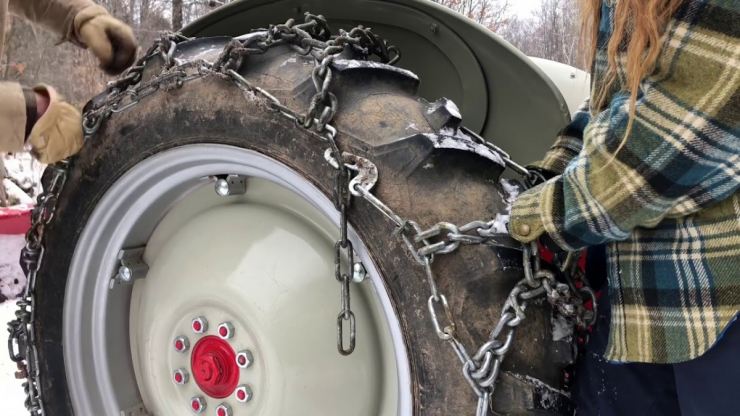 They are not equipped with an internal chamber, so they are not afraid of mechanical damage. It should be borne in mind that such a running traction has a lot of weight, therefore it is suitable for heavy walk-behind tractors. nine0007
They are not equipped with an internal chamber, so they are not afraid of mechanical damage. It should be borne in mind that such a running traction has a lot of weight, therefore it is suitable for heavy walk-behind tractors. nine0007
Our store offers a wide range of wheels for a walk-behind tractor from trusted manufacturers, including Neva . We guarantee the high quality of each unit and offer the most favorable price , because we work directly with suppliers without intermediaries.
If you have any difficulties, just call the contact numbers. Professional consultants with experience will help you choose the best model, including big wheels for the cart of the motor-block at the most favorable cost.
The driving traction must provide the cultivator with high maneuverability, while not damaging the plantings and seedlings on the site!
03/05/2013
Probably the most common cyclist failure is a tire puncture, especially if he rides in an aggressive style. Either he hit the glass, then a nail, and sometimes he just ran into the curb at speed. Experienced cyclists can change the tube in the bike with their eyes closed, but what about a beginner who can't even take off the wheel, let alone change the tube. The main thing is not to despair! If you are traveling a long distance (and always better), take a pump with you, a spare tube, or, in extreme cases, a "bike first aid kit" for the wheel. Someday she will save you from the fate of pulling the bike "on yourself". nine0007
Either he hit the glass, then a nail, and sometimes he just ran into the curb at speed. Experienced cyclists can change the tube in the bike with their eyes closed, but what about a beginner who can't even take off the wheel, let alone change the tube. The main thing is not to despair! If you are traveling a long distance (and always better), take a pump with you, a spare tube, or, in extreme cases, a "bike first aid kit" for the wheel. Someday she will save you from the fate of pulling the bike "on yourself". nine0007
So, if you punctured the wheel , first you need to get off the bike, in no case continue to move on a flat tire . Firstly, you will tear the tube even more, and secondly, you can ruin the tire, and in the worst case, the rim.
How to change the tube on a bicycle
1) If the wheel has not completely deflated, deflate it to the end, to do this, unscrew the nipple (spool) cap.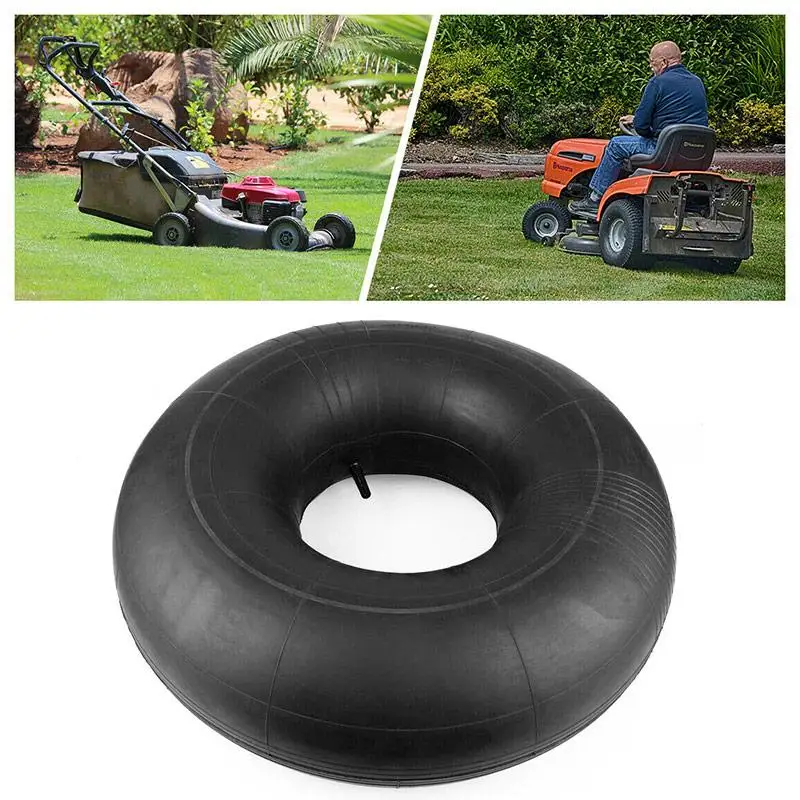 If you have a nipple (spool) the same as in the car, press something sharp on the small button in the middle and hold until the tire is flat. If you have a cap with a key for the spool, then just unscrew it. If you have a nipple (spool) like in old bicycles, unscrew the lamb and take it out. nine0007
If you have a nipple (spool) the same as in the car, press something sharp on the small button in the middle and hold until the tire is flat. If you have a cap with a key for the spool, then just unscrew it. If you have a nipple (spool) like in old bicycles, unscrew the lamb and take it out. nine0007
2) Remove the wheel. If the wheel is on an eccentric, removal will not cause difficulties, if not, then keys will be needed (depending on the bike and wheel - 13-17).
3) If you have "pliers", use them to remove the rim from the wheel, if there are no pliers, you can use an improvised tool (wrenches, etc.), but it is advisable not to use objects with a sharp edge - this can lead to damage to the tube or rim. Tear the tire with your tool and, resting it against the rim, press down until the edge of the tire comes out of the rim, then take the second key or mount and do this action again, while NOT removing the first key. When you feel that the keys do not lean back when you release them - just try to move the second key in a circle away from the first key.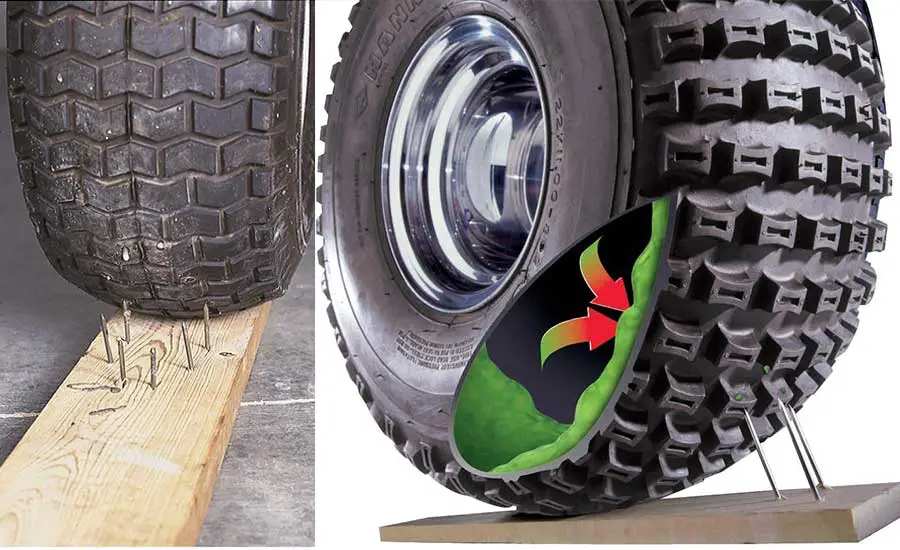 nine0007
nine0007
4) Remove the camera by simply grasping it with your fingers. Grasp the opposite side of the nipple (spool).
5) In principle, it is possible to insert a new tube, but I recommend removing the tire completely (this can be done by hand or with tools (wrenches)).
Check the condition of the rim: there are no metal burrs inside, check the condition of the rim tape, look inside the tire. This should be done if you change cameras frequently and don't know where you might have blown a tire. nine0007
How to install a tube in a bicycle wheel
1) Take a new tube or a sealed tube (how to tape a tube), squeeze it with one hand and run it in a circle - this will help to clean it of unwanted foreign objects (rubber pieces, metal chips, etc.) .d.)
2) Lightly inflate it, if you removed the tire completely, put it on one rib (if the rubber is directional - make sure you install it correctly (you can peek at the rear wheel if the treads are the same)).